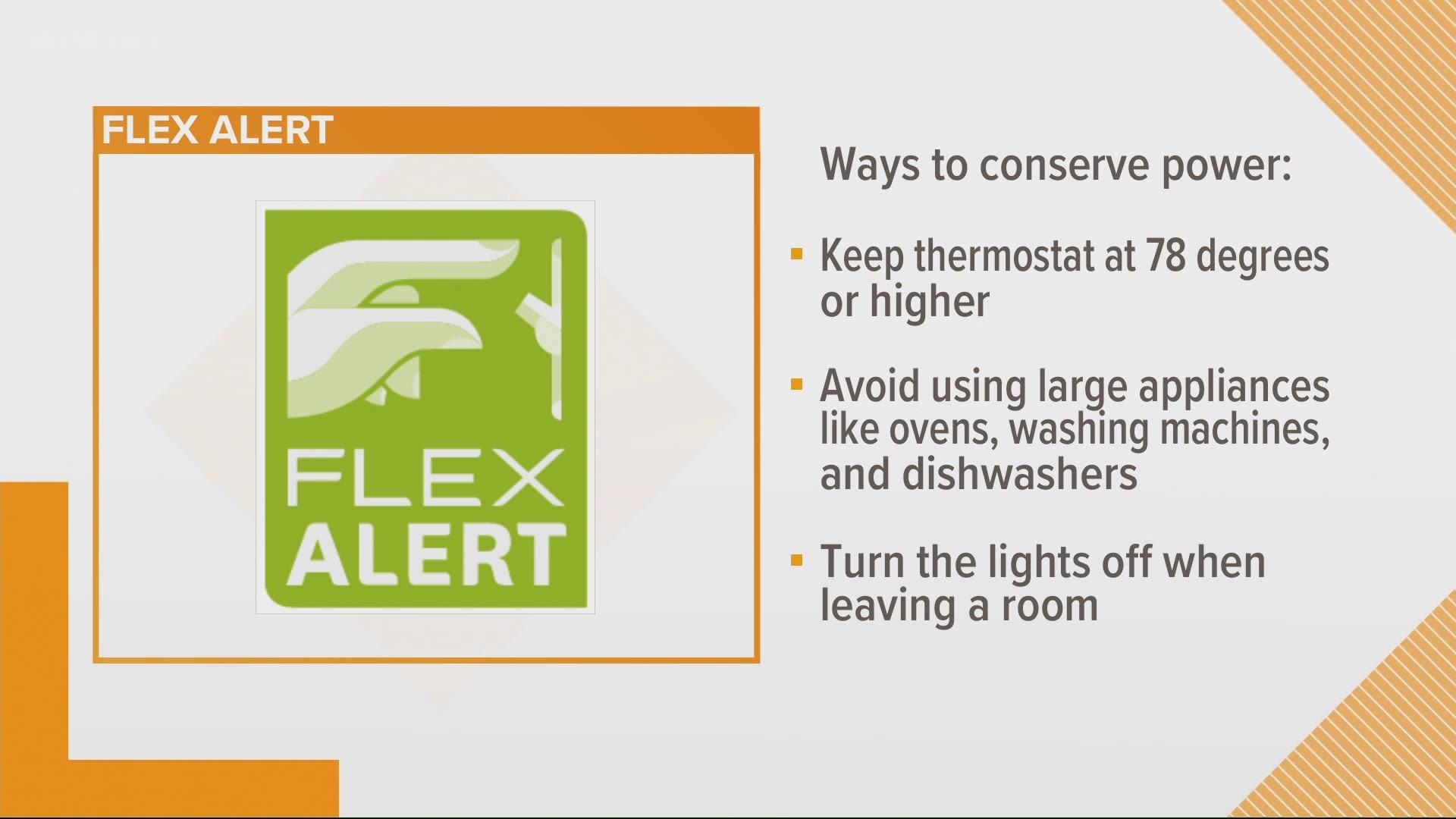SACRAMENTO, Calif — 22 counties in Northern California might face power shutoffs due to wildfire conditions caused by dry, offshore winds that could last from Monday to Wednesday evening, according to PG&E officials.
PG&E officials listed some of the following counties that might face a Public Safety Power Shutoff (PSPS): Amador, Butte, Calaveras, El Dorado, Humboldt, Kern, Lake, Napa, Nevada, Placer, Plumas, Shasta, Sierra, Sonoma, Tehama, Tuolumne and Yuba. Roughly the 103,000 customers within those counties could potentially lose power.
This PSPS is different from the potential for rolling blackouts warned due to the heat wave. PSPS are called due to wildfire danger. Heat wave rolling blackouts occur when California's energy grid cannot keep up with demand.
Click HERE to see if your address is affected.
PG&E's meteorologists and its wildfire safety operation are checking on weather conditions as it gets closer to the weather event. PG&E says its employees will visit customers who are enrolled in the medical baseline program but do not receive electronic notifications.
The utility company conducted power shutoffs in 2019 in an effort to prevent wildfires.
A Flex Alert from California Independent System Operator (CAISO) is still in effect from 3 - 9 p.m. Monday, Sept. 7.
Resources on PG&E PSPS:
- PG&E power shutoffs resources | Need to know
- How do you prepare for PG&E Power Safety Shutoffs | You tell us
- Your questions on PG&E power outages, answered
- How to keep food safe and cold during a power outage
- PG&E could cut your power to prevent wildfires. Is it time to own a backup generator?
- PG&E launches power shutoff forecasting site
PG&E’s equipment has been linked to more than 20 wildfires, including the deadly 2018 Camp Fire, the utility has updates its Public Safety Power Shutoff plan in 2019 to include the de-energization of the big transmission lines during fire-favorable weather conditions. That means more communities are facing the potential for days-long power shutoffs, as PG&E preemptively shuts off the power, waits for the weather conditions to pass and then inspects every inch of the de-energized lines to make sure it’s safe to turn the power back on.
PG&E Resources:

